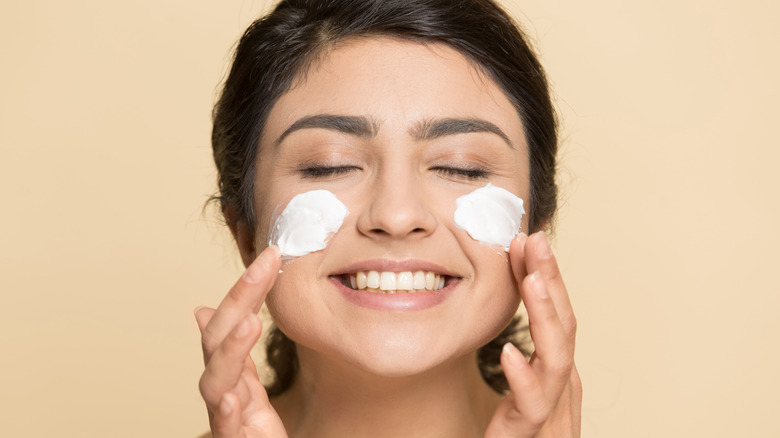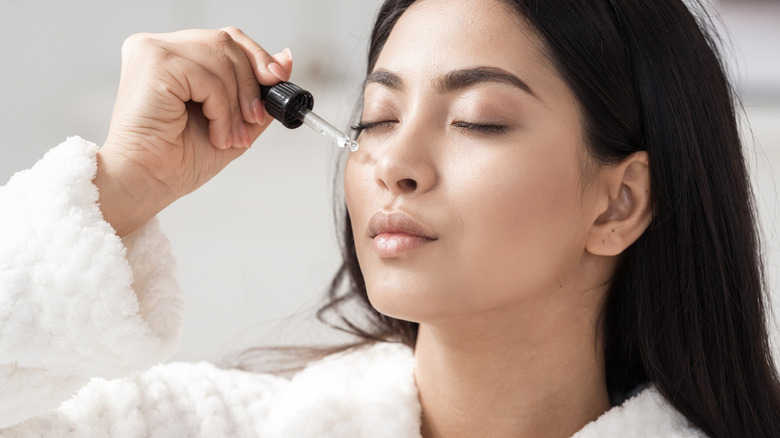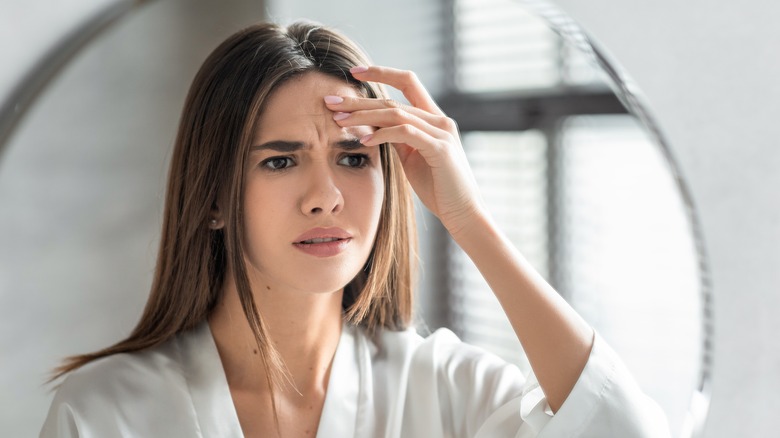Does A Tingling Sensation After Using Skincare Mean It's Working Better?
Blame it on the fitness buffs. They've been saying "no pain, no gain" for so long that the expression has seeped into the vernacular. People ascribe the two-step chain of events to many things, including skincare. In fact, many people seem to think that feeling a tingling sensation (the "pain") after applying a topical treatment means it's working (the "gain"). To a degree, the glib statement is accurate about soreness and achiness after a workout, the Cleveland Clinic says, but muscles in the body are very different from skin on the face. So, it's worth considering why you might be feeling that tingling sensation in the first place.
Look no further than alpha-hydroxy acids and beta-hydroxy acids, which often cause a tingling sensation, Skincare.com says. The sensation occurs as the acids exfoliate the skin or as they remove dead skin cells from the top layer of the skin, Advanced Dermatology & Skin Cancer Associates says. You're more likely to feel that tingling feeling if you've just started using an exfoliating product (hence the need to conduct a "patch test" first) or you've switched to a more potent formula, according to Skin City. Ingredients like vitamin C and retinol may cause the same reaction as vitamin C and retinol. So, while normal, does that tingling sensation mean you can assume the skin treatment is working better?
Even tingling should fade fast
A slight but crucial distinction must be made: the tingling may signal the treatment is working but not that it's working better. The risk in believing that "pain equals gain" could lead you to apply even more treatment than you should on the false assumption that more treatment will cause more tingling, which will lead to better (or faster) results. This is definitely not the case and could even damage your skin.
Retrace the process to ensure you understand. As Skin City notes, AHAs (alpha-hydroxy acids) cause the tingling sensation because they have contrasting pH levels with the pH level of your skin. So, in some cases, a tingling sensation might actually mean that the product is doing its job, leveling the playing field, per Advanced Dermatology & Skin Cancer Associates. But make no mistake: this tingling sensation ought to fade quickly, especially as you continue to use a skincare product, use less of it or use it less frequently (say, every other day instead of every day). However, don't expect the tingling to last. Your skin can get used to the product and then not feel it anymore (via Skin City). It should make sense, then, that your ultimate skincare goal is to feel nothing, according to esthetician Renée Rouleau.
Compare tingles to stingles and stings
You may be wondering if you define "tingling" the way others do. Contrasts often help, and esthetician Renée Rouleau obliges by separating tingling from what she calls a "stingle" and a sting. A tingle is palpable, though mild, she says. It fades quickly and leaves behind no redness. A stingle is a "mild prickling sensation" that sticks around a little longer but also goes away on its own. When it does, the skin may or may not look pink. A sting is a "moderate to severe prickling sensation" that can linger for as long as one minute or longer. (If it does, you've entered the "burn" stage). Stings often leave the skin red and require some type of calming treatment (like a coating of aloe vera). Common sense should rule your response: if a topical skin treatment causes you pain, burns, or turns your skin red, stop using it (via Skin City).
It also makes sense to leave the "no pain, no gain" philosophy to fitness buffs. After all, if you continue to live by this philosophy, your face will be ever-inflamed, meaning that you're never letting your skin rest. Our skin needs time to process the treatments we've given it, so at the end of the day, it's best not to chase the tingle but rather to rest, knowing that you've done what you can — and that your face is doing everything it can to make the most out of your treatments.


